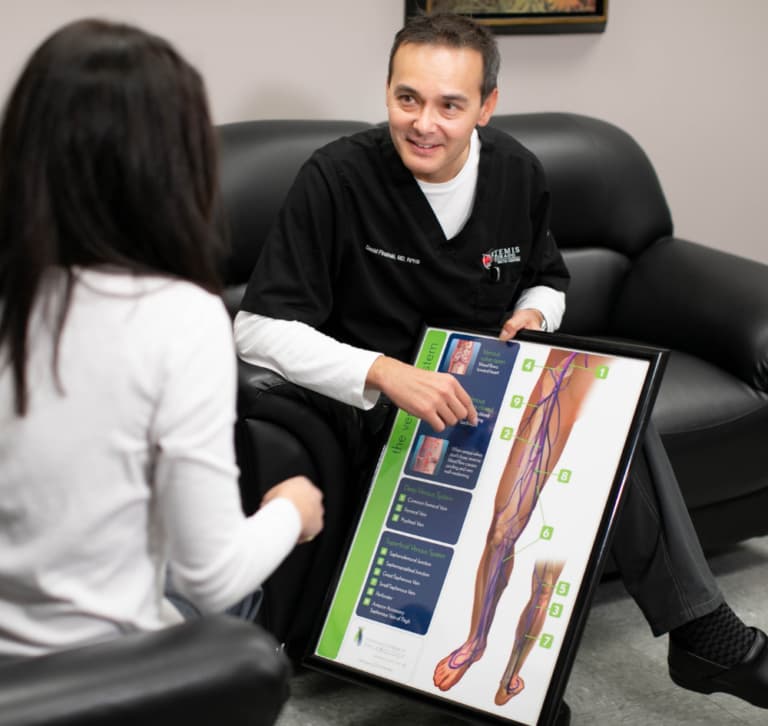
| Winter can be a difficult time for those suffering from vein issues. Understanding the underlying causes of winter leg discomfort is essential in devising effective strategies for relief, empowering individuals to take proactive steps to mitigate their symptoms and enhance their overall well-being. Contact Dr. Pinsinski Today! and schedule your appointment today to explore your vein treatment options. |
As the winter chill doubles down, many individuals find themselves grappling with a common yet often overlooked discomfort: winter leg pain. Whether it’s a result of decreased circulation, exacerbated joint stiffness, or heightened sensitivity to temperature changes, cold weather can amplify sensations of discomfort and unease in the lower limbs.
However, amidst the frosty temperatures and biting winds, some strategies and remedies offer relief, allowing individuals to navigate the winter season with greater comfort and ease. In this exploration of winter leg discomfort, we delve into the factors that contribute to these sensations, from physiological changes in the body to environmental influences.
Winter leg discomfort can manifest in various forms, ranging from a mild ache to more pronounced sensations of pain and stiffness. Factors such as decreased physical activity constricted blood vessels, and changes in atmospheric pressure can all contribute to these symptoms, making the colder months particularly challenging for those prone to leg-related issues.
By shedding light on the mechanisms underlying winter leg pain, we aim to equip readers with valuable insights and practical tips for finding relief in the cold. From lifestyle adjustments to targeted interventions, there are myriad approaches that individuals can explore to alleviate winter leg discomfort and reclaim their comfort and mobility during the frosty months ahead.
Leg pain can create challenges at any time of the year but different seasons have different effects on these problems. Symptoms of venous disease are:
Aside from the cold, winter brings dry air and changes in atmospheric pressure. Dry air is a year-round challenge for people living in Colorado, but it gets worse with the heaters running. It causes excessive itching and scratching on the areas over varicose veins.
In extreme cases, a person may scratch hard enough to break through the skin and cause bleeding. To counteract this drying effect, it’s important to stay hydrated and soothe dry skin with moisturizing lotion. If itching becomes hard to control, then speak to your primary care physician about anti-itch products.
Changes in atmospheric pressure give some people headaches or sinus discomfort, but others may feel painful venous disease symptoms worsen. While frustrating on their own, these symptoms can also lead a person to be more sedentary, which unfortunately only contributes to the progression of venous disease.
While many Coloradoans tend to be active during the winter, leg pain and other symptoms of venous disease can reduce a person’s desire to get out and do even gentle exercises like walking (snowy sidewalks don’t help!).
Even if you’re stuck at home, some simple interventions can keep you moving and help relieve discomfort.
There are many ways to be active at home.
While winter can exacerbate vein issues, it’s also one of the best times for vein treatment. Insurance companies may require a compression stocking trial that can last up to three months, depending on the severity of the patient’s symptoms.
Compression stockings can be a very effective intervention that eases leg pain and discomfort. While they are not hot or uncomfortable, they do add a light layer of extra warmth that fits nicely underneath pants during colder months.
Discover relief from vein issues with our proven treatments led by Dr. Pinsinski in Westminster. With a track record of successful outcomes, we offer the solutions you need.
Schedule your appointment today to explore your vein treatment options and regain vein health. Contact Dr. Pinsinski Today!